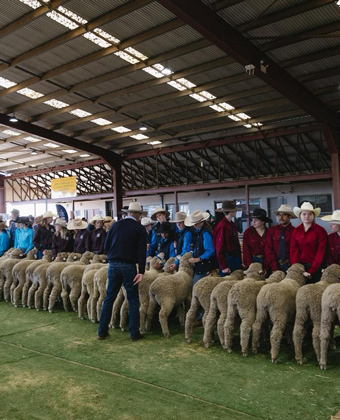Wool’s Eco-Credentials Pass the Smell Test

Australian Wool Innovation (AWI) is proud to announce the findings of its latest research project, which underscores the environmental benefits of wool garments. The AWI-funded project has revealed that wool's natural odour resistance not only keeps wearers fresher for longer but also significantly reduces the energy required for laundering compared to polyester and cotton garments.
Key research findings
The study, led by AgResearch in New Zealand in collaboration with Consumption Research Norway (SIFO), focused on the energy consumption associated with laundering garments made from different fibre types. Human volunteers participated in the study, wearing base-layer garments (T-shirts), mid-layer garments (hooded sweaters), and pairs of socks made from Merino wool, cotton, and polyester. The participants assessed the garments' odour to determine the number of days they could be worn before laundering was necessary.
The results were clear: over the course of a year, wool garments demonstrated the lowest energy consumption during laundering, making them the most environmentally friendly option. Wool garments were followed by cotton, with polyester garments needing the most frequent washing.
Environmental impact of garment use phase
When evaluating the environmental impact of clothing, it is essential to consider the 'use phase' – the period when the garment is owned and worn. This phase has a significant effect on the garment's overall environmental footprint. Wool garments have been shown to have a longer average lifespan and are more likely to be reused or recycled than garments made from other fibres, further enhancing their eco-credentials.
Laundering garments also carries a substantial environmental impact due to the consumption of energy, water, and detergents. Wool garments are generally laundered differently than those made from other fibres, and this study highlights the extent to which wool reduces energy consumption during the laundering process.
Positive research results for wool
The AWI-funded study's findings are promising for the wool industry. The research demonstrated that wool's natural odour resistance allows for longer wear between washes, reducing the frequency of laundering and, consequently, the environmental impact. This aligns with previous research showing that wool garments have a longer lifespan and are more likely to be reused or recycled.
AWI Chief Executive Officer John Roberts, commented on the study's findings: "We are delighted with the results, which further highlight the environmental benefits of wool. Wool's natural odour resistance and reduced laundering frequency make it an excellent choice for environmentally conscious consumers. This research reinforces our commitment to promoting sustainable practices within the wool industry and supporting Australian woolgrowers."
AWI Program Manager for Fibre Advocacy and Eco Credentials, Angus Ireland, says the study reinforces the positive eco-credentials of wool in a world where there is increasing concern about society's trend towards ‘fast fashion’ and the effect on the environment of synthetic textiles.
“The fact that wool clothes need less frequent washing not only reduces energy consumption, it also preserves the as-new look of the garment, enabling consumers to continue wearing it for longer,” Angus said.
“By AWI funding scientific studies such as this one, the wool industry is in a knowledge-powerful position regarding the true impact on the environment of wool compared to other fibres. Importantly, the studies enable AWI, Woolmark, and the wider wool industry, to demonstrate to the fashion and textile trades, regulatory bodies, and consumers that wool is the planet-friendly fibre of choice.
“The results of this particular study also indicate the benefits of focusing environmental research on consumer habits and culture, and not only technologies.”
The research also explored the broader implications of wool's eco-credentials. Wool's natural properties, such as its ability to biodegrade and its renewable nature, make it a standout choice for sustainable fashion. Unlike synthetic fibres, which can take hundreds of years to decompose, wool breaks down naturally, returning valuable nutrients to the soil. This characteristic, combined with wool's durability and long lifespan, positions it as a leading material in the fight against fast fashion and textile waste.
Furthermore, the study highlighted the importance of consumer education in promoting sustainable laundering practices. By encouraging consumers to wash their wool garments less frequently and at lower temperatures, the environmental impact of clothing can be further reduced. AWI is committed to raising awareness about these practices and supporting consumers in making environmentally friendly choices.













